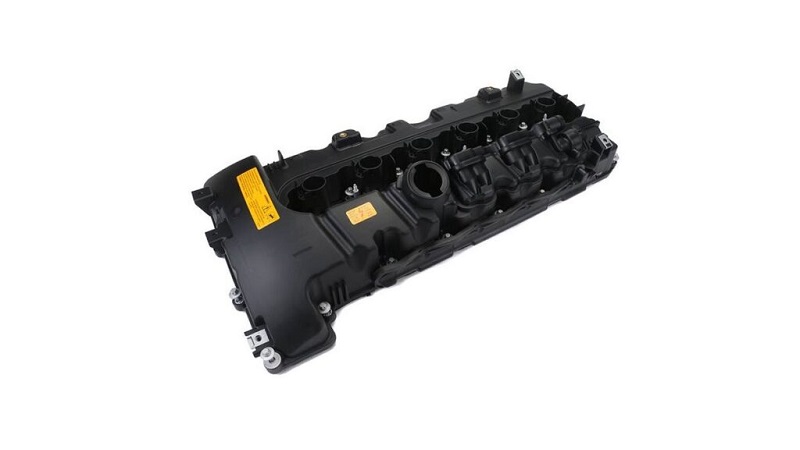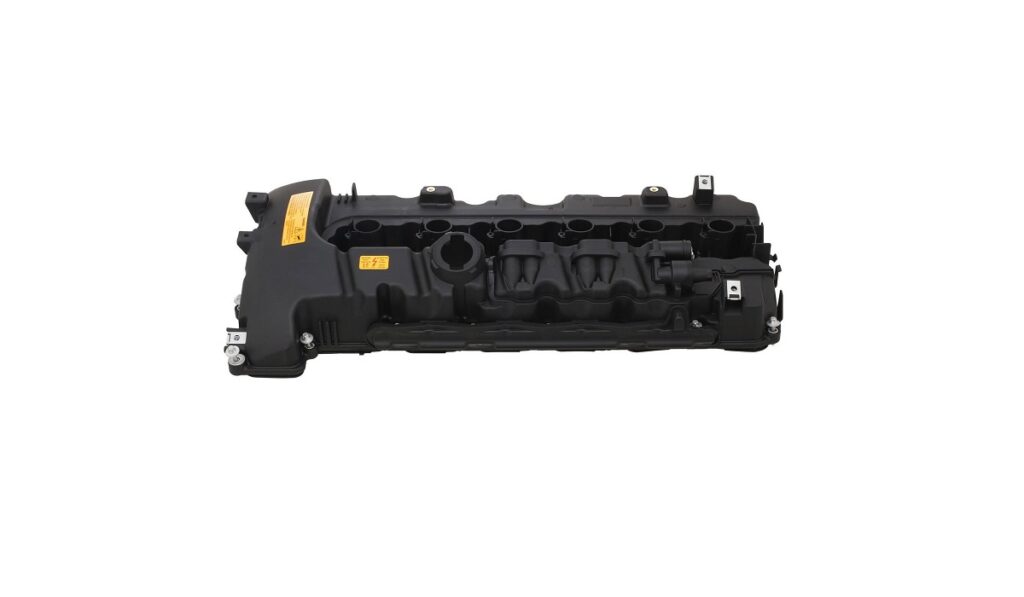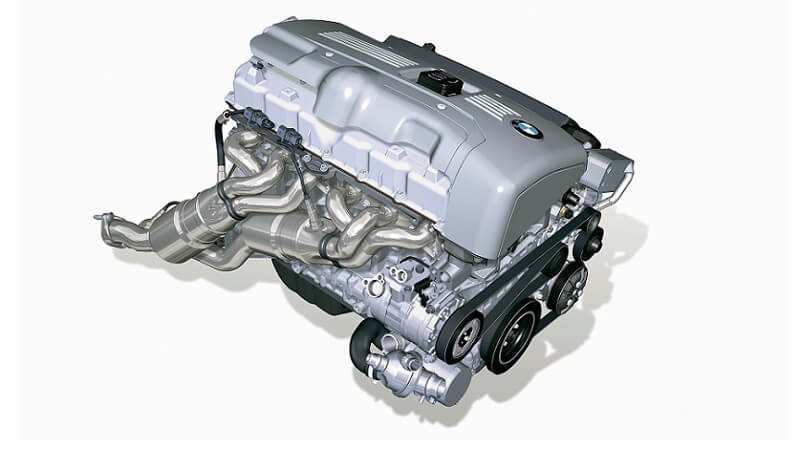The Positive Crankcase Ventilation (PCV) system is a critical component in modern engines, playing a vital role in controlling emissions and maintaining engine performance. In the case of the BMW N54 engine, a powerful and popular engine found in various BMW models, the PCV system takes on a dual-mode approach to effectively manage crankcase gasses. By understanding the low and high vacuum PCV system employed in the BMW N54 engine, drivers and enthusiasts can gain valuable insights into how this system operates and its impact on the engine’s overall performance.
In this blog post, we will explain the PCV system on the BMW N54 engine, shedding light on both the low vacuum and high vacuum operating modes. We will explore the functions of key components, such as the flapper valve, oil separator, and PCV valve, and how they work in harmony to regulate crankcase pressure and reduce harmful emissions.
By the end of this article, you will have a comprehensive understanding of the PCV system on the BMW N54 engine, enabling you to appreciate its significance in maintaining engine health, optimizing performance, and promoting a cleaner and more environmentally friendly driving experience. So, let’s dive in and explore the intricacies of the low and high vacuum PCV system on the BMW N54 engine.

The Low Vacuum PCV System
Under normal driving conditions, when the engine is not producing excessive crankcase pressure, the low vacuum PCV system operates to regulate the flow of gasses. This system utilizes three essential components: the PCV valve, the flapper valve, and the oil separator that features four centrifugal cones called oil cyclones.
The flapper valve serves as the entry point for fresh air into the crankcase. It allows clean air from the intake system to enter the crankcase, maintaining a balanced pressure and preventing the buildup of harmful pressure. However, when the engine is running in vacuum mode, i.e. idling, low boost conditions, the flapper valve is closed and the PCV valve is open.
Get a new N54 valve cover with integrated PCV components!
The oil separator plays a crucial role in controlling the flow of crankcase gasses back into the intake manifold. It acts as a centrifugal filter, effectively separating oil vapors from the crankcase gasses. The employs a series of cones that create a swirl in the blow-by gasses, thus separating the heavier oil particles from the lighter combustion gasses. The oil particles then drain back into the engine while the gasses are further processed by the PCV system.
The low vacuum PCV system operates seamlessly during regular driving conditions, maintaining a healthy balance between the intake manifold and the crankcase. This helps reduce emissions and prevents excessive pressure from building up within the engine, promoting optimal engine performance and longevity.
Understanding the functioning of the low vacuum PCV system provides a solid foundation for comprehending the more demanding high vacuum PCV system, which comes into play during specific operating conditions. In the next section, we will explore the intricacies of the high vacuum PCV system on the BMW N54 engine.
The High Vacuum PCV System
The high vacuum PCV system is engaged during specific operating conditions where the engine produces increased crankcase pressure, such as wide-open throttle or high engine load situations. This system incorporates an additional component known as the Positive Crankcase Ventilation (PCV) valve, which is integrated into the valve cover.
The PCV valve is a check valve that is vacuum operated, providing precise control over the flow of crankcase gasses. When the engine is operating under high boost conditions, the valve closes since there is plenty of positive pressure in the crankcase due to forced induction. At the same time, the flapper valve opens and allows the exfil of gasses away from the valve train.
By actively managing the flow of crankcase gasses, the high vacuum PCV system helps maintain optimal engine efficiency. It prevents the accumulation of harmful gasses and contaminants in the crankcase, reducing the likelihood of engine oil leaks and promoting cleaner combustion. Moreover, the controlled reintroduction of crankcase gasses into the intake manifold allows for efficient burning during combustion, enhancing overall engine performance and fuel efficiency.
The integration of the high vacuum PCV system in the BMW N54 engine demonstrates the commitment to optimizing emissions control and engine performance. By dynamically adapting to varying operating conditions, this system ensures the engine remains in its optimal state, minimizing the environmental impact and maximizing the driving experience.
The collaboration between the low and high vacuum PCV systems on the BMW N54 engine offers a comprehensive approach to crankcase ventilation, enabling efficient emissions control and maintaining engine health. In the following section, we will explore the synergistic benefits of this dual-mode system and its impact on overall performance.
Synergy and Benefits of the Dual-Mode System
The dual-mode PCV system, comprising both the low and high vacuum operating modes, offers several synergistic benefits that contribute to the optimal performance of the BMW N54 engine. Let’s delve into these advantages:
Balanced Crankcase Pressure
The low vacuum PCV system ensures that the crankcase remains at an appropriate pressure level during normal driving conditions. It allows fresh air to enter the crankcase while effectively separating oil vapors and directing clean gasses back into the intake manifold. This balanced pressure environment prevents excessive pressure buildup, which could lead to oil leaks or other engine issues.
Effective Emissions Control
By actively managing the flow of crankcase gasses, the PCV system significantly reduces emissions. The controlled reintroduction of these gasses into the intake manifold ensures that they are efficiently burned during combustion, minimizing the release of harmful substances into the environment.
Improved Engine Performance
The high vacuum PCV system further enhances engine performance during demanding operating conditions. By allowing a larger volume of crankcase gasses to be drawn into the intake manifold, the system ensures efficient combustion, maximizing power output and throttle response. Additionally, it helps maintain optimal air-fuel ratios, contributing to improved fuel efficiency.
Preventing Oil Contamination
The dual-mode PCV system effectively separates oil vapors from the crankcase gasses, preventing oil contamination in the intake manifold. This ensures that only clean gasses enter the combustion chamber, promoting smoother operation and reducing the risk of carbon buildup on internal engine components.
Long-Term Engine Health
The PCV system’s efficient management of crankcase gasses contributes to the long-term health and longevity of the engine. By minimizing pressure imbalances, oil leaks, and harmful emissions, the system helps maintain the engine’s internal components in good condition, reducing the likelihood of costly repairs.
Understanding the collaboration between the low and high vacuum PCV systems on the BMW N54 engine provides valuable insights into the system’s significance in emissions control, engine performance, and overall reliability.
The BMW N54 PCV System Issues
The PCV system on the BMW N54 isn’t impervious to failure, unfortunately. For starters, the PCV valve itself, no matter how simple and robust, has a service life. Yet, it’s not the PCV valve that causes the majority of the problems on these engines. It’s the integrated passageways that run through the valve cover. Given enough time these passageways begin gathering oil residue due to the increase in blow-by gasses.
The most common causes of PCV system failure on the BMW N54 engine can include the following:
Clogging or Blockage: Over time, the PCV system can become clogged or blocked due to the accumulation of oil sludge, carbon deposits, or other contaminants. This can restrict the flow of gases and impair the functioning of PCV components, such as the flapper valve or PCV valve.
Valve Malfunction: The flapper valve and PCV valve, can experience wear, deterioration, or mechanical failure. These valves may fail to open or close properly, leading to improper management of crankcase gases and pressure imbalances within the engine.
Oil Separator Failure: The oil separator, responsible for separating oil vapors from crankcase gases, can fail due to factors such as internal diaphragm rupture or blockage. A malfunctioning oil separator can result in increased oil consumption, excessive oil buildup in the intake system, or reduced efficiency in separating oil from gases.
Vacuum Leak: PCV system failure can also be caused by vacuum leaks in the system. Vacuum hoses or connections that become damaged, cracked, or disconnected can disrupt the proper functioning of the PCV system, leading to irregular crankcase pressure and potentially triggering fault codes.
Improper Maintenance: Neglecting regular maintenance, such as oil changes and replacing PCV components at the recommended intervals, can contribute to PCV system failure. Oil sludge buildup or degradation of PCV components can occur if maintenance tasks are not performed as recommended by the manufacturer.
Environmental Factors: Harsh operating conditions, such as extreme temperatures or exposure to excessive moisture, can accelerate the deterioration of PCV system components. These conditions can lead to the formation of ice, oil emulsification, or other issues that compromise the proper functioning of the PCV system.
It’s important to note that the specific causes of PCV system failure can vary depending on individual vehicle usage, maintenance history, and other factors. Regular inspection, maintenance, and addressing any signs of PCV system malfunction promptly can help prevent failure and ensure the proper functioning of the PCV system on the BMW N54 engine.
PCV Delete Kits, or Should You Delete Your PCV System?
PCV delete kits can have varying levels of effectiveness and potential impact on an engine, depending on the specific circumstances and how the modification is carried out. It’s essential to consider the following points:
Effectiveness: PCV delete kits, particularly those equipped with catch cans or oil separators, can be effective in reducing oil contamination and carbon buildup in the intake system. These devices can help trap excess oil vapors and prevent them from entering the combustion chamber, potentially improving engine cleanliness and performance.
Risks and Engine Damage: However, it’s important to recognize that completely removing or modifying the PCV system without proper considerations and modifications can potentially lead to adverse effects. The PCV system is designed to regulate crankcase pressure, prevent oil leaks, and maintain a healthy internal environment within the engine. By removing or altering these components without appropriate modifications, there is a risk of increased crankcase pressure, inadequate ventilation, and potential engine damage, such as oil leaks or increased oil consumption. Additionally, your turbos won’t be able to drain, causing increased pressure on the oil seals within the turbo. While these seals work great at keeping the oil at bay while it’s passing by them, they don’t work too well with oil that is constantly sitting against them. Sooner or later, you will get white smoke coming out of the exhaust, high oil consumption and overall disruption of your engine’s performance. PCV delete kits aren’t necessary, and won’t give you any significant performance benefits.
Emissions Compliance: PCV delete kits may also have implications for emissions compliance, as the PCV system is an integral part of the engine’s emissions control system. Removal or modification of the PCV system may result in increased emissions, which could lead to non-compliance with local regulations.
Engine Management System: It’s important to consider the impact on the engine management system. On modern vehicles, the engine control unit (ECU) relies on data from various sensors, including those related to the PCV system, for proper engine operation and emissions control. Removing or modifying the PCV system may disrupt these sensor inputs and potentially trigger fault codes or impact overall engine performance.
Get Replacement PCV Components for your BMW N54 Engine at Bimmers.com!
The low and high vacuum PCV system on the BMW N54 engine represents an advanced approach to crankcase ventilation, ensuring efficient emissions control and optimal engine performance. The low vacuum system regulates crankcase gasses under normal driving conditions, while the high vacuum system engages during high-demand situations, promoting efficient combustion and preventing excessive pressure buildup.
By maintaining a balanced crankcase pressure, the PCV system prevents oil leaks, reduces harmful emissions, and enhances long-term engine health. If your PCV system has failed, we have the parts you’ll need to fix it! Head over to our shop, select your BMW and find everything you need at sharp prices!






